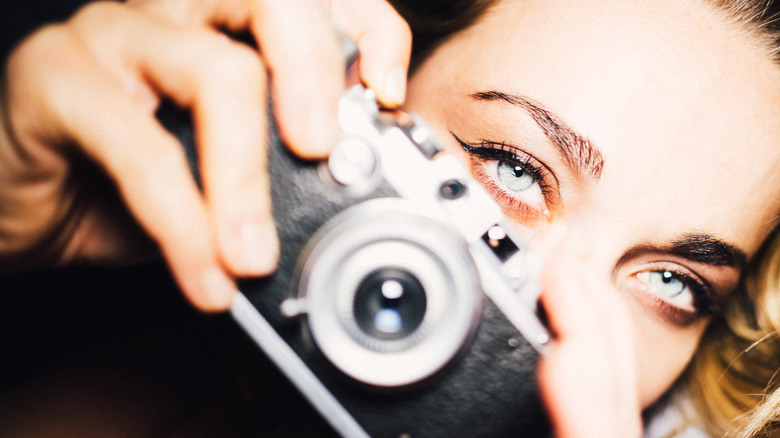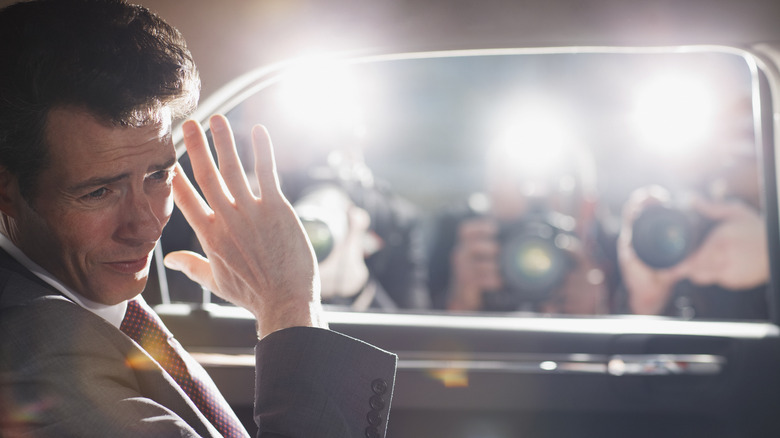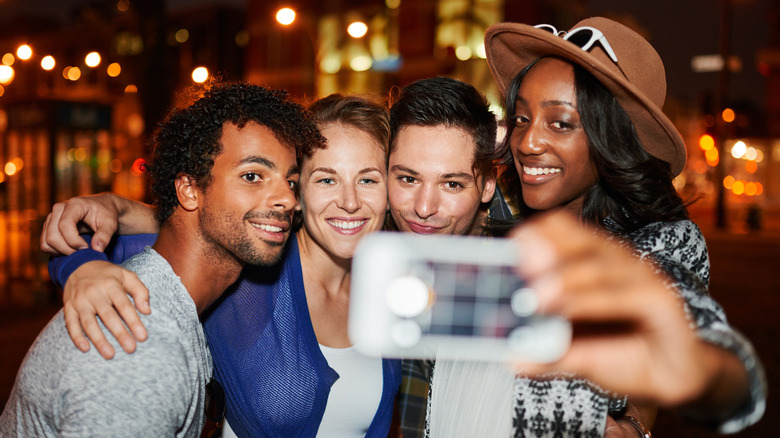What Happens To Your Eyes When A Bright Camera Flashes
When it comes to making memories, a picture is worth a thousand words, they say. Whether at a family gathering, a high school reunion, or a friend's birthday dinner, at some point during the evening, someone is bound to whip out their camera and yell, "Say Cheese!"
Although we only experience the flash of a camera for a mere 1/400th of a second, it can leave a lasting impression in the form of floating dots that temporarily cloud our vision (via Optimax Eye Surgery). STAT reporter Megan Thielking explains that when light enters through the cornea, the lens that sits behind our pupil starts to process the image. The image is then sent into the back of the eye to our photoreceptors. It's our photoreceptors that communicate with the brain to interpret the image we see in front of us. When bombarded with a bright camera flash, however, it's too much for our photoreceptors to handle. As a result, our overwhelmed photoreceptors may take a few seconds to return to baseline, leaving us with a lingering image of the camera flash.
Can a bright camera flash harm our eyes?
Generally speaking, the effects of a bright camera flash on our eyes are short-lived. Experts at Optimax Eye Surgery note that it would likely take anywhere from 30 to 100 seconds of prolonged light exposure to put us at risk for eye damage. Because the flash of a camera lasts less than one second in duration, there would be no harm done even if a person were to take several photos of you back to back. Additionally, most cameras utilize low-wattage LED bulbs, which aren't powerful enough to damage our vision.
Physical distance provides another layer of protection when it comes to flashing photo lights. Odds are, you're not positioning your eye right up against the camera lens. Rather, you're probably several feet back. The further away you are from the camera, the more the intensity of the flash weakens. For example, a person standing four feet back from a camera receives only 1/16 of the strength of light a person standing one foot away would be exposed to.
What is selfie-epilepsy?
For a small number of people, there may be one risk to consider when snapping a flash photo. According to researchers from a 2017 case report published in the scientific journal Seizure, some people with photosensitive epilepsy may be susceptible to seizures in response to flash photography. Such was the case for a teenage girl who had previously experienced a generalized tonic-clonic seizure in response to flashing strobe lights at a school event. Using video EEG monitoring, it was found that the girl experienced increases in brain activity similar to the type of brain activity seen during seizures when she had taken a handheld selfie photo with the flash and red-eye reduction feature enabled while in a low-light environment.
Termed "selfie-epilepsy," the researchers cautioned that taking close-range selfies with the flash enabled may pose a unique risk to photosensitive epilepsy patients. Although rare, the researchers suggest that further study could potentially prove the need for warning labels on smartphones, much like those often seen accompanying movies or video games.



